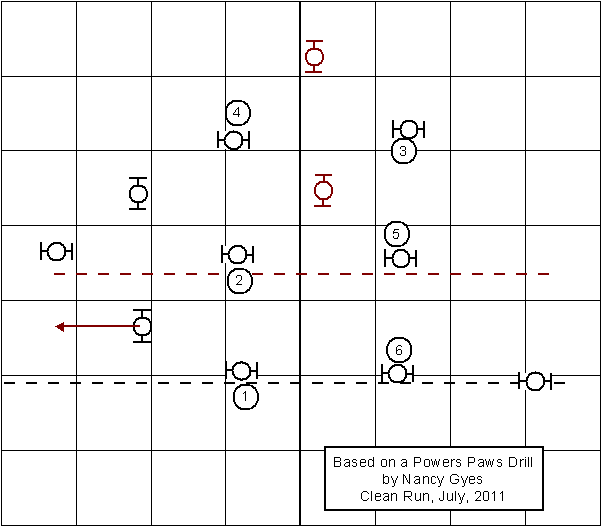I tried handling Belle from behind line L1. But once again, she ran much slower moving away from me than when coming toward me. When I ran Dusty, I used L2 as my handler path because my goal with him is to eliminate head checking. Since that went so smoothly with Dusty (relatively speaking), I tried it with Belle. She was faster moving away from me when I worked along the red line, but still not as fast as when coming toward me. What to do?
I decided to go back to square one for the send. I set up a traffic cone and tried using treats to reinforce movement away from me around the cone. There were a couple of problems with this approach.
- My timing of the click wasn't consistent enough to let Belle know what I really wanted, i.e., a fast send to the cone.
- In order to receive her reward, Belle had to return to me. Not the best placement of a reinforcer for the behavior I wanted to work on. (Note: The treat could be tossed indoors to the appropriate spot to reward the behavior. On grass, it's not really an option without a food tube.)
- On some of the sends, Belle moves at a pretty nice speed, but the return is always much faster. You can see her digging in after she makes the turn around the cone.












